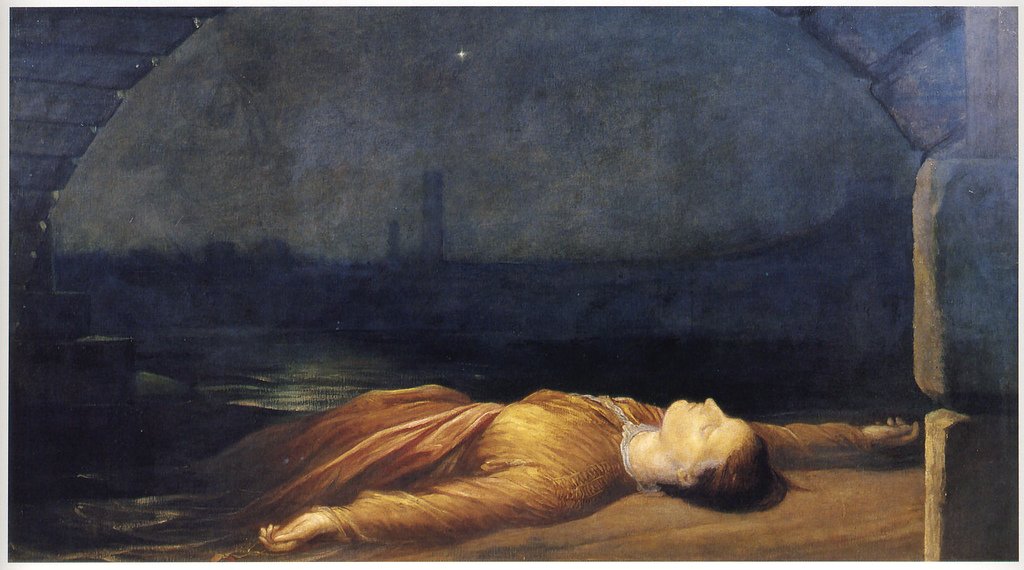Watts Gallery has always been on my "To Visit" list, as we always drive through Compton on the way to visit my Grandad. My mum last went about 15 years ago, so she was very interested to see how it had been improved since the £10m restoration, the building was actualy on the English Heritage's "At Risk" list!
Considering I am completely obsessed with the Arts and Crafts movement, my first impression was, "Isn't this LOVELY" - and it only got lovelier as we walked around. It was truly a beautiful and unique resoration, and i think it beats many of the larger more well-known London galleries, and makes them look quite clinical and dull.
The gallery originaly opened in 1904, and the restoration returned the walls to their original vivid blues and reds, and the tiled dado rails (previosuly covered in paint) back to their shiny best. As you walk into the sculpture studio, you are blown away by the use of glass and high wooden beams, as the architects Adam Zombory-Moldovan and Lucy Clark of ZMMA – has brought in light and drama.
In his day, George Fredrick Watts was as popular as Dickens, in that they both used the inequalities of Victorian life in their work. He was internationaly renowned, being the first living artist to be given a one man show at the Metropolitan Museum of Art. He was born in London in 1817 and was encouraged to persue his artistic ambitions by his father. He exhibited at at the Royal Academy Summer Exhibition for the first time in 1837 with his painting "The Wounded Heron". Thereafter, there seemed nothing Watts could not achieve, portraits, narrative painting, landscapes and even sculpture (see in my photo's below, his Monument To Lord Tennyson - awe inspiring)
His most famous painting, and still Barack Obama's favourite, is "Hope", the curled bindfolded woman astride a globe with her broken lyre. At the gallery is the finest version of this painting, on loan from a private collection, and they had an accompaning exhibit about it's amazing story, and several different artists own interpretation of the work.
I think that's what i take most from Watt's work, it isn't just classic Victorian symbolism, his paintings are timeless, relating as much to the modern world and all it's troubles. My favourite of his paintings is "Drowned" and in the gallery where you can see the true vivid spirit of the work, the body seems to glow amongst the looming darkness. Watts could capture the essence of a spirit by using light like no other painter. Go see the paintings in the flesh and you'll see exactly what I mean, they will capture you!
I am also a fan of his wifes work, Mary Seton Watts, who collaborated with him on many of his creative projects. In this room they exhibited many of their diaries, sketches and experiments which was facinating to see. They worked as a fantastic team, Mary was actualy one of his students, so she was a skilled craftswoman in her own right. I think she influenced his sculpture style immensly, as the examples of her own work prove.
My mum's favourite painting was "Portrait of The Painter's Wife" - A stunning study of Mary Watts. He certainly adored the female neck, several of his paintings are homages to this pose.
Together, George and Mary left London for Compton where they built their house Limnerslease, and commissioned Christopher Hatton Turner to create a nearby gallery in Arts & Crafts style, "a simple & rural type of building", to be constructed of rendered concrete and Surrey tiles. It opened in 1904, just three months before Watts died. Thereafter, it was Mary who kept the flame alive, and it is her that we have to thank for the richness of the gallery's collection – something the refurbished Watts sweetly acknowledges with its display of her remarkable bronze triptych in memory of her nephew, Death Crowning Innocence. Mary was, of course, a supremely talented artist in her right; the Compton Potters' Arts Guild she founded survived until the 1950s.
Here are some more photographs i took from the sculpture room, such intricate work! I was blown away by these studies.
Now, some of you may recognise the style of these plaques, as they are the same as those in The Postman's Park Memorial in London. This garden was built in memory to those who's heroric deeds ended in fatality. George Watts attempted to gains support for the memorial through The Times and other initiatives, but recieved little interest. Undeterred, he championed the project over 34 years, completing it just four years before his death.
This could be my most admired of Watts work, a completely selfless deed. I must pay the park a visit, I must admit, i've only seen a photographic representation of it at The Whitechapel Gallery - One for the "to do" list!
Watts has something for everyone to enjoy. The collection comprises 6,000 objects including 250 oil paintings, 800 drawings and watercolours and 200 sculptures. These works have never had a better chance of capturing the imagination of a new generation for whom the great GF Watts, and his wife, Mary, are still an unknown quantity.
Thanks!
Katie




















No comments :
Post a Comment